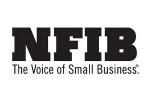CHICAGO — Dry cleaners who know the right questions to ask their accountants or tax preparers are better armed to get the most out of the tax deductions for which they might be eligible.
This was the message of Barbara Weltman, an attorney and author, specializing in matters pertaining to small businesses and entrepreneurs, and serves on the advisory board of the Small Business & Entrepreneurship Council. She recently spoke during an online presentation hosted by SCORE to highlight what small-business owners should look for during discussions with their tax team.
Weltman pointed out that her presentation was for information purposes only, and that owners should consult with their professional tax advisor or accountants before acting on any of the information presented.
In Part 1 of this series, we examined tax benefits employers could enjoy by hiring certain groups of people, and the role the Employee Retention Credits program might still play in their tax decisions. Today, we’ll continue by looking at two of the most popular employee benefits companies can offer.
Health Insurance
“We know that health coverage is probably one of the most important fringe benefits that you can offer employees,” Weltman says. “Almost all big companies do, and small companies really should try to find ways to do it.”
A crucial determination a company should make, she says, is if it must offer insurance.
“The first thing you need to do is to decide whether in the coming year you’re going to be considered an applicable large employer (ALE), subject to the employer mandate under the Affordable Care Act,” Weltman says. “You do this based on your 2023 payroll.”
According to IRS.gov, “If an employer has at least 50 full-time employees, including full-time equivalent employees, on average during the prior year, the employer is an ALE for the current calendar year and is therefore subject to the employer shared responsibility provisions and the employer information reporting provisions.”
“If you have to do it, then you have to decide to offer a minimum affordable health coverage in the coming year or pay a penalty,” Weltman says. “It’s pay or play, as they say.”
Even companies that don’t fall under ALE should examine what they can do for employees in this critical area, she says.
“If you’re not an ALE, you may qualify for a special tax credit for small employers offering health coverage obtained through the government’s Small Business Health Options Program (SHOP),” Weltman says. “You don’t buy it online — you buy it through agents, but you have to go through the online portal (see IRS Form 8941). You have to pay at least half the premiums and jump over a lot of hurdles to qualify, but if you do, it’s a great tax break.”
Another way that some small businesses can afford to pay for health coverage or help pay for health coverage, Weltman says, is to offer a high-deductible health plan combined with a Health Savings Account.
“You can also pay for the High Deductible Health Plan insurance,” she says, “which offers premiums much lower than a traditional group plan, and you can let employees pay for their contributions to the health savings accounts. Or, you can do it all. And if you contribute to the plan, you get to deduct the premiums that you’ve paid for, as well as the contributions you’ve made, up to annual limits each year. The good news is that what you do here is exempt from payroll tax. So it’s a good benefit. And you are going to be able to ensure that your employees have health coverage protection.”
Other ways cleaners can help their employees is with health coverage through various reimbursement arrangements.
“One allows employees to obtain their own coverage from a qualified small employer Health Reimbursement Arrangement,” Weltman says. “Or you can use what’s called an individual coverage Health Reimbursement Arrangement. With this arrangement, the dollar limit is set by you. It’s whatever dollar limit you set, and this allows employees to go out and get their own coverage.”
Cafeteria plans are also an option, Weltman says, “that enables employees to, again, get their own coverage, but using pre-tax dollars. In other words, the money they put into the cafeteria plan to pay for health care premiums is not treated as taxable compensation for the year. You can also offer flexible health spending accounts, which will supplement their out-of-pocket health costs.”
Retirement Plans
Retirement plans are one of the most popular benefits employers can offer, and there are more options than ever for employers looking to make the most of the tax breaks these programs can bring.
“There is a slew of new retirement plan rules for 2023 and more for 2024,” Weltman says. “At the end of December 2022, the SECURE (Setting Every Community Up for Retirement Enhancement) 2.0 act introduced a lot of new rules or expanded existing rules, and there are many breaks for employers for offering certain kinds of plans.”
These plans, Weltman cautions, depend on how many people are employed at the company.
“The plans have to cover at least one person who’s not highly compensated,” she says, “so it can’t be just you, the owner — it has to cover at least one rank-and-file employee to get these benefits.”
Perhaps the best-known of these plans is the 401(k) tax-advantaged retirement account.
“I want to mention the starter 401(k),” Weltman says, “because it’s a plan that doesn’t require any employer contributions. In fact, it doesn’t permit employer contributions. Employees make pre-tax salary reduction contributions to Roth-like accounts. It’s a way for people to start saving for retirement, and I know financial insecurity is a big deal for many employees.”
A new benefit employers can offer, as part of SECURE 2.0, is helping their team deal with student loan debt as they save for retirement.
“If you have a 401(k),” Weltman says, “you can treat student employees who are repaying student loans as if they’re making elective deferrals, and you can make matching payments.”
Another benefit employers can offer their teams is emergency savings accounts.
“The account can grow to $2,500, and you can allow for emergency withdrawals up to $1,000 that can be re-contributed within three years,” Weltman says.
In 2024, employees can put as much as 3% of their paycheck in such accounts, which can grow to a total of $2,500. Since these contributions are already taxed as income, unlike 401(k) contributions, the funds are immediately available as soon as the employee requires them.
“You can also allow for penalty-free withdrawals for participants who are victims of domestic abuse,” she says.
Come back Thursday for the conclusion of this series, when we’ll explore how taxes in 2024 will deal with equipment, vehicles and other company assets. For Part 1, click HERE.
Have a question or comment? E-mail our editor Dave Davis at [email protected].





























